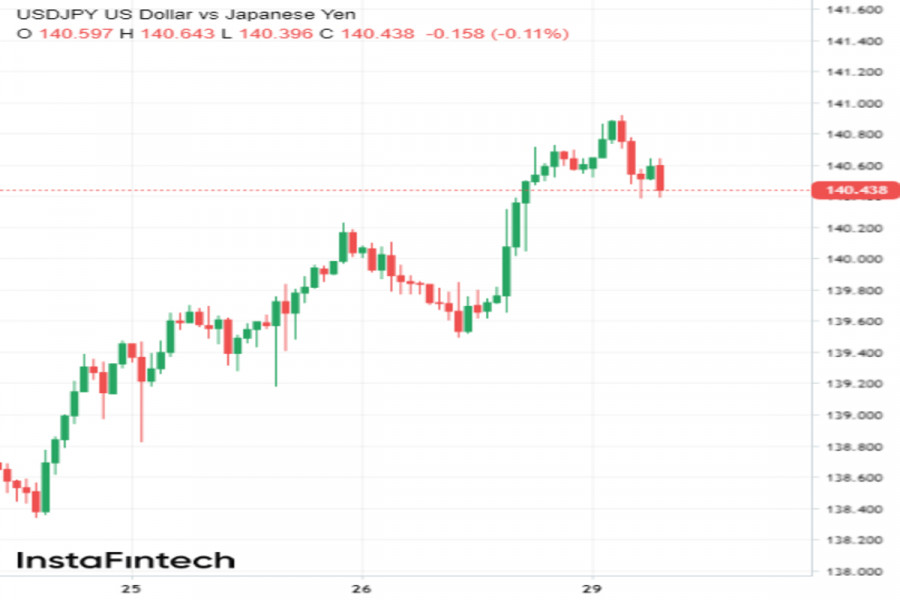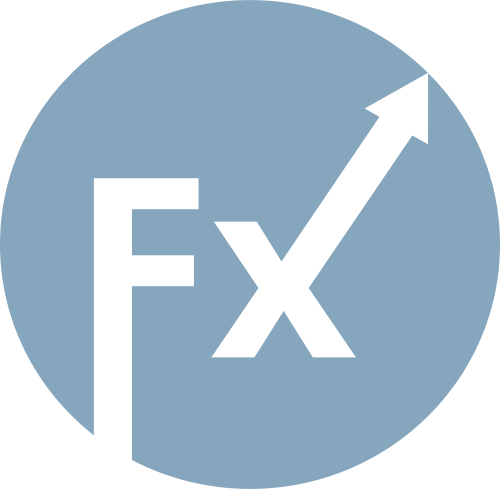Soustřeďte se na ta nejjednodušší řešení.
Není snadné překonat index S&P 500. Většině profesionálních investorů se to nepodaří, i když si za správu vašich peněz účtují nemalé peníze. Ironií je, že k dosažení fantastických investičních výsledků nepotřebujete žádnou fantastickou a složitou obchodní strategii. Správný přístup, jakkoli jednoduchý, může přinést hvězdné výsledky.
A někdy je jednoduchost lepší. Vezměte si například Vanguard Growth ETF (VUG). Tento nudný indexový fond za dobu své existence překonal index S&P 500!
Jaké je jeho tajemství? Čtěte dále a zjistěte, jak se tento jednoduchý indexový fond může stát jednoduchou investicí, která vám vydělá miliony, a kterou budete chtít mít ve svém portfoliu.
Nemusíte být kouzelník na výběr akcií, abyste překonali index S&P 500. Stačí, když si koupíte a budete držet ETF Vanguard Growth. Tento indexový fond překonal index S&P 500, a to není náhoda. Fond existuje od roku 2004, takže jeho výsledky zahrnují dvě desetiletí, včetně několika býčích a medvědích trhů.
Vraťme se na chvíli zpět. Vanguard Growth ETF je indexový fond, což znamená, že je to fond obchodovaný na burze, který je konstruován tak, aby napodoboval index akciového trhu. Indexy jsou koše akcií, které mají investorům poskytnout představu o tom, jak si vede trh nebo ekonomika. Některé indexy mají široký záběr, zatímco jiné jsou úzké a zaměřují se na konkrétní odvětví nebo segment trhu.
Pravděpodobně jste již slyšeli o známých indexech, jako je Dow Jones Industrial Average a S&P 500. ETF Vanguard Growth také sleduje index, ale není tak známý. Sleduje CRSP US Large Cap Growth Index, index téměř 200 růstových akcií, které jsou převážně velkokapitálové (tržní kapitalizace nad 10 miliard USD).
Nákup jedné akcie fondu Vanguard Growth ETF je jako nákup malého kousku všech společností v tomto indexu. Je to snadný způsob, jak diverzifikovat své investice.

Výkonnost fondu Vanguard Growth ETF je více o investiční strategii než o konkrétních akciích v rámci fondu.
Většina akcií na trhu spadá do dvou kategorií: růstové a hodnotové. Růstové akcie jsou rychle se rozvíjející společnosti a často upřednostňují růst tržeb nebo získání podílu na trhu před ziskovostí. Zatímco hodnotové akcie jsou zpravidla vyspělé společnosti, které jsou vysoce ziskové a zaměřují se spíše na vracení zisků investorům ve formě dividend nebo zpětného odkupu akcií.
Růstové akcie bývají volatilnější, ale v průběhu času dosahují lepších výsledků, protože jejich růst se zvyšuje. Fond Vanguard Growth ETF se výrazně opírá o rychle rostoucí tržní sektory, jako jsou technologie (58 % fondu) a spotřební zboží (18 %). Fond S&P 500 je těmto sektorům vystaven, ale méně, protože je více diverzifikovaný. Technologické akcie tvoří 32 % a akcie z oblasti spotřebního zboží 10 %.
Sečteno a podtrženo? ETF Vanguard Growth má větší riziko a volatilitu, ale větší potenciál růstu. To se v průběhu času potvrdilo.
Opět jde spíše o filozofii než o konkrétní akcie. Akciové indexy, včetně indexu CRSP US Large Cap Growth Index, se budou vyvíjet podle toho, jak budou společnosti vznikat nebo zanikat. Kromě toho se výhled pro růstové akcie, zejména technologické, zdá být slibný. Společnost pokročila od internetu ke cloud computingu a nyní je další fází technologického vývoje umělá inteligence (AI).
V indexovém fondu dominují technologické těžké váhy jako Apple (AAPL), Microsoft (MSFT) a Nvidia (NVDA) a tyto společnosti budou hrát významnou roli v dlouhodobém růstu AI.
Nezapomeňte, že růstové akcie nemají vždy dobrou výkonnost. Tyto společnosti se obvykle obchodují při vyšším ocenění, což je činí náchylnými k prudkým výprodejům během poklesů trhu. Investoři se o tom přesvědčili v roce 2022, kdy rostoucí úrokové sazby zvýhodňovaly hodnotové akcie. Předvídat tyto tržní cykly je nemožné, proto se zaměřte na dlouhodobý horizont a neustále přidávejte nové úspory do svých investic.
Udělejte to a růstový ETF fond Vanguard vám může pomoci vybudovat životní bohatství v příštích dvou až třech desetiletích.

Greenback has developed a full-blown rally. Last Friday, it significantly accelerated against the yen and does not seem to be slowing down. This week, analysts predict another surge in volatility for the USD/JPY pair. What will drive the major currency pair and what highs can it reach?
USD spreads its wings
It seems that the US default issue is about to be resolved soon. On Sunday, the White House announced that President Joe Biden and Speaker of the House of Representatives Kevin McCarthy had reached an agreement to raise the national debt ceiling and submitted a draft decision to Congress for approval.
If lawmakers approve the draft in the coming days, the US national debt limit will be increased. This should save the country from bankruptcy and a potential economic crisis.
The fact that the US could avoid a recession eased investors' fears of a slowdown in the global economy. Against this backdrop, risk sentiment returned to the market, which slightly weakened the US dollar.
On Monday morning, DXY sank against a basket of major currencies by 0.05% to 104.15. Analysts attribute the current resilience of the greenback to a rather powerful hawkish support.
Last week, traders received a lot of arguments in favor of further rate hikes in the US, which forced them to change their forecasts for future monetary policy.
Investors are currently evaluating the likelihood that the Fed will again raise borrowing costs by 25 basis points at its June meeting at almost 70%. For comparison, a week ago, it was just 17%.
Also in recent days, many market participants have been betting that the Fed will not soften its monetary policy this year as it was previously assumed.
What strengthened the confidence of investors in the US regulator's plan for further tightening? First, a series of hawkish statements by members of the US central bank. Last week, several Fed officials made it clear that they do not expect rate cuts before the end of the year due to sticky inflation.
Secondly, a rather optimistic economic environment contributed to investor optimism. The latest macro data showed that the US economy is still firmly on its feet, despite the prolonged tightening of monetary conditions in the country.
In May, business activity in the US improved significantly, and GDP for the first quarter came in higher than expected.
But the most compelling sign of a resilient US economy for investors was the growth in real consumer spending released on Friday.
The release showed that in April, the PCE price index rose by 0.4% against the preliminary estimate of 0.3%. Experts warn that higher consumer spending is fueling inflationary pressures.
Given this risk, many traders believe that the Fed may decide to take another round of tightening in June before pausing the rate hike.
The fact that US rates could rise even more is a strong tailwind for the US dollar, especially when trading against the Japanese yen, which continues to suffer from the BOJ's dovish policy.

For your reference, the interest rate in Japan is currently -0.1%, while in the US, the cost of borrowing is in the range of 5-5.25%.
Increased hawkish expectations pushed USD/JPY to a new 6-month high of 140.61 last week and strengthened it by more than 1%.
As for the monthly dynamics of the major, it has soared by 3% since the beginning of May. This is the best result of the US dollar trading against the yen this year.
Meanwhile, many analysts see the potential for a further rally in USD/JPY. Moreover, the next jump of the major is expected this week.
What can drive USD higher?
Strange as it may seem but one of the springboards for the US currency in the short term may be the approval of the debt ceiling by the US Congress.
If the US manages to meet its debt obligations, this will significantly minimize the risk of a recession in the country and around the world, which will certainly lead to a recovery in risk assets.
But we should not forget that this will be a solution for the United States itself. Now that the Fed continues to struggle with high inflation, it really needs strong support in the form of a stable economy.
If fears of a recession cool down noticeably in the near future, traders will have no doubts about further monetary tightening by US lawmakers. This will lead to a rise in the US dollar in all directions, including the dollar/yen pair.
Also, hawkish expectations this week will most likely be fueled by Fed representatives (Thomas Barkin from the Richmond Fed, Patrick Harker from the Philadelphia Fed, and Federal Reserve Board Governor Philip Jefferson).
Given the recent comments by FOMC members, many analysts expect the aggressive rhetoric to continue. If their forecasts come true, the US dollar will rise across the board, with the most advance against the yen.
Volatility in the dollar-based majors is expected to increase at the end of the working week when the May release on US employment will be published.
Now, most economists predict an increase in the number of people employed in the country's non-agricultural sector by 180,000 against an increase of 253,000 in April.
Perhaps the May data will show a slowdown in hiring but this is unlikely to calm the Fed. The cooling of the jobs market is going much slower than previously expected, so the regulator still has room for further action, according to Bloomberg Economics.
If we do not see sharp negative dynamics in the US labor market, this may increase the likelihood of another tightening cycle in June. In this case, the greenback dollar will show large-scale growth, with the yen being the main loser.
To summarize the forecasts of leading analysts, one can see that the Japanese currency has almost no chance to strengthen against the dollar this week, as expectations of further hawkish moves from the Fed outweigh speculation about a possible change in the policy of the Bank of Japan.
However, growing fears about an increasing difference in monetary conditions between the US and Japan are not the only obstacle in the way of JPY.
The yen will continue to weaken as the Japanese stock index Nikkei is gaining momentum. Also, the outflow of funds from safe-haven assets amid waning fears of a global recession may also contribute to the yen's decline.
"If dollar bulls manage to take USD/JPY above 141 in the near term, their next target will be the level of 142. This will open the way towards the 145 area," analyst Christopher Lewis predicts. – Short-term pullbacks would be a good buying opportunity as the 138 level is now a "hard bottom." In fact, this is the top of the ascending triangle which the pair has just left.

LINKS RÁPIDOS